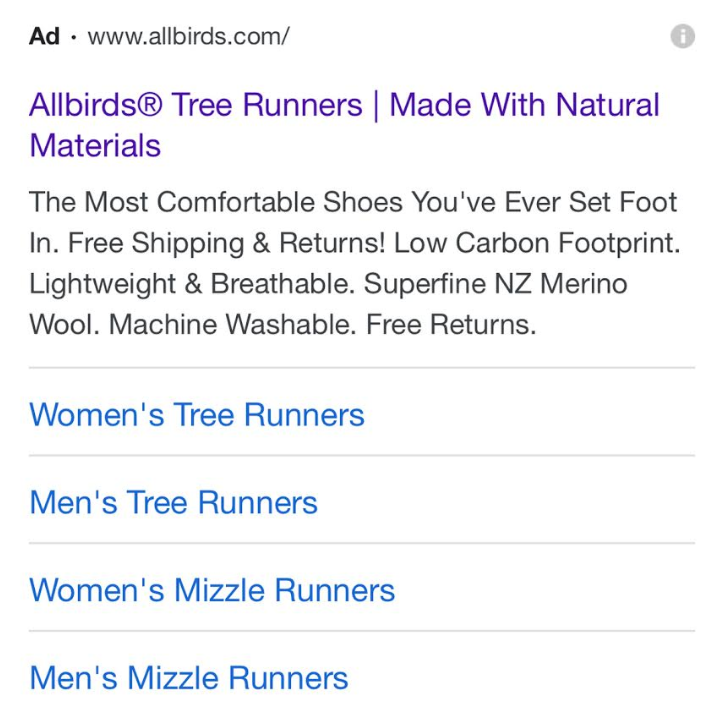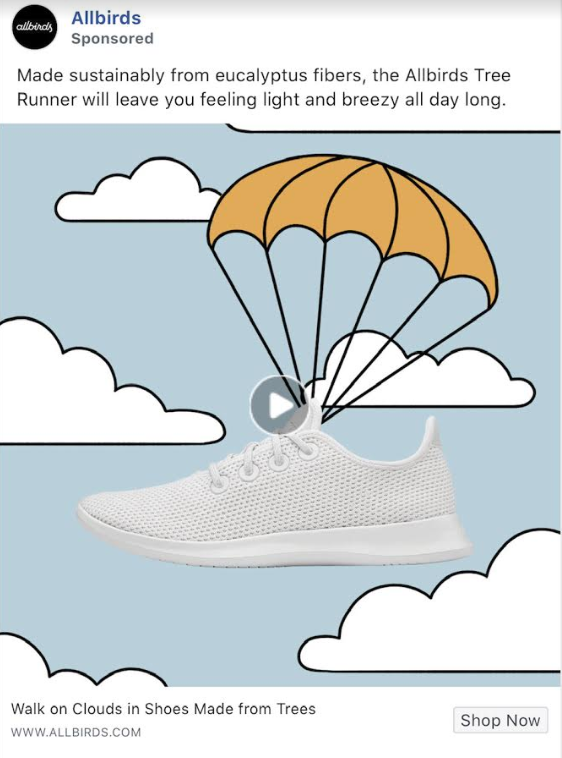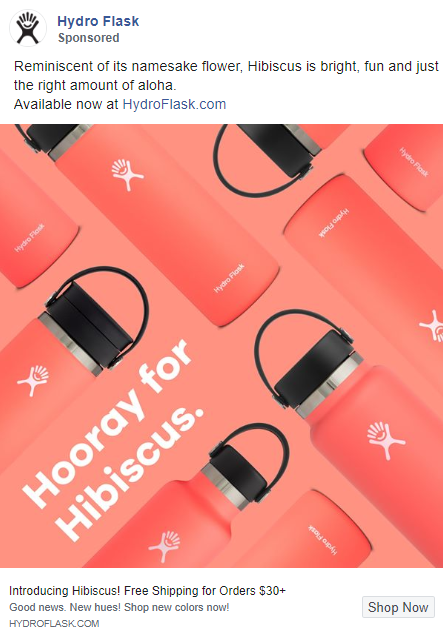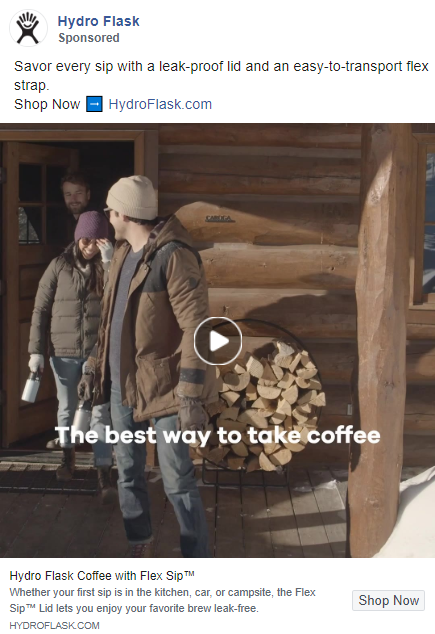Agencies Have Been Siloed For Too Long
Not this agency! Here at Seer, we live into cross-collaboration. We thrive because of it. However, there was a time when we were more siloed than we would have liked. Over the past few years, through collaboration and leveraging each others’ data, we’ve found the key to digital success: cross-channel strategies.
When it comes to Paid Social, it can be hard to justify dedicating a chunk of your advertising budget on campaigns due to the nature of the platforms -- Social is very top funnel focused. On Paid Search, however, people are already searching for your product or service, so your campaigns are almost always driving more middle or bottom-funnel conversions.
To make your campaigns more meaningful and to drive more high-quality conversions, keep these four essential tactics in mind:
- Cohesive messaging
- Creative assets
- Targeting consumers at the appropriate stage of the funnel
- Remarketing audiences
Connecting with your customers through relevant and meaningful connections at every step of the funnel will ultimately impact your bottom line. Keep reading to understand the full potential of a holistic paid strategy and watch it works wonders for your brand.
Cohesive Messaging:
Whether you’re running a cross-channel remarketing campaign or running separate Facebook awareness and Google search campaigns, cohesive messaging is key.
Using similar messaging and offers (such as promotions, discounts, etc.) across ALL paid channels not only helps increase brand recognition but increases consumer trust as well.
However, since PPC & Paid Social lie in different stages of the funnel, we typically recommend the tone of the messaging differ. For example, Paid Social language has a more organic feel to it.
Use a tool such as SEMRush or Ahrefs to analyze your brand’s top organic search terms to see how people are searching for your product or service. You can even try testing emojis in your copy as a way of communicating with your audience visually. On the other hand, for PPC copy, you’ll want to be a little bit more formal.
Allbirds does a great job with cross-channel messaging. How do we know this? Well, we at Seer could quite possibly be the biggest reason they are so successful with how much we advocate for these amazing shoes. No seriously, the number of employees who rock these shoes on a daily basis is amazing.
Anyway, we were browsing for AllBirds incredibly comfortable treerunner shoes and came across this ad:

This copy is very straightforward and a little more formal, with all the first letters of each word capitalized. The ad speaks to the tree runners being natural and comfortable. A few minutes after clicking on this ad, we were scrolling through Facebook and came across this ad:

The ad does a great job reiterating how comfortable these shoes are by serving fun copy such as “walk on clouds” and “...will leave you feeling light and breezy”. It also still touches on that it’s all-natural, using sustainable in the copy.
Another element to point out is that the Facebook ad also has a fun video gif to get the point across with how comfortable the shoes are, which helps the ad become more organic. Creative assets are a crucial aspect of your cross-channel strategy.
Creative Assets:
Capturing your audience with the right creative is essential, especially when 65% of the population are considered visual learners (forbes.com).
If you have solid creative, you’ll ensure that your potential customers are going to be more interested in your products after they are searching on the web. Testing creative assets in your Social campaigns helps to inform which creative elements work best for remarketing efforts.
In a mobile-first world, it’s important to make sure your creative is properly sized for all placements on social platform partner sites. Design your creative to ensure your aspect ratios are correct in order to utilize the extent of your real-estate on paid platforms.
Test videos, static imagery, or draw your consumers in with dynamic imagery to see which resonates best with your audience.
Try testing lifestyle vs. product imagery to see which one yields the highest results for your awareness campaigns.
Hydro Flask is a great example of a brand that capitalizes on different creative assets on paid social:


Remember to keep your testing plan simple and only test one attribute to gather valuable insights into what works and what doesn’t. Let the data help you understand your audience from a visual perspective.
- For example, use two different 15-second videos on social platforms embellishing your product. Remarket your product on YouTube, building off of the successful components of your Social creative assets.
The purpose of these tests is not to simply repurpose creative assets, but instead, as a means to understand which creative components work best with your audience across paid channels. But hold on, isn’t timing everything?
The Customer Journey Based On Specific Goals:
We are all aware of the stages of the Marketing Funnel, but are you syncing your Search & Social campaigns to properly address your consumers at every stage? Let’s say the goal of your Search & Social campaigns is to drive site traffic. These are the campaign types and KPIs we would leverage, starting with awareness and ending with the conversion stage.
Awareness Goals
Now’s the time to feed information to consumers where and when they need it, regardless if they know it or not! Reaching people like this who aren’t aware that they need help solving a problem or need a certain product is best done on Paid Social platforms.
The beauty of Paid Social is being able to drive consumer content, targeting higher funnel searches to new audience segments.
- For example, let’s say you want to drive awareness of your luxury outdoor furniture brand. Advertise top-of-funnel video content around your brand’s “Idea Guide”, optimizing for impressions to reach consumers who are likely to view your video for at least 15 seconds.
Using video content, such as the “Idea Guide”, nurtures your consumer to be pleasantly surprised that your brand exists, with a product they didn’t know they needed until now. Remember, this type of content is not meant to drive conversion, but to nurture your lead through to the consideration phase.
Start building audiences off of people who have watched 15 seconds of your video content or have interacted with your Facebook page!
Consideration Goals
Now that you’ve increased general awareness of your brand, you need to position yourself to have consumers come to the conclusion that your brand is the right pick.
- Target consumers with comparison content on Social, such as “Top 5 Best Luxury Outdoor Furniture Brands”, optimizing for landing page views to reach consumers who are more likely to load your website after clicking on your ad.
The ultimate goal here is to have consumers consider your brand on Social and continue to do some digging elsewhere.
Target top keywords in your Search campaigns to capture consumers who are ready to research and familiarize themselves with your brand. Your search ads will help capture those audiences at the right place, at the right time!
- Bolster your remarketing audiences by adding in consumers who have hit your landing page through this consideration stage, both on Facebook & Google (you’ll need to have proper UTM parameters for this - we’ve got you covered below if you want to learn more about those).
Armed with your remarketing audiences, continue to dive deeper into the funnel by driving consumers to take your desired action.
Decision Goals:
Your targeted consumer has decided that your brand is the right fit for their outdoor furniture needs. But how do they find you? Time to pass the torch off to Paid Search to drive that bottom-funnel conversion.
Consumers are in need of that clear pathway to purchase. The easier it is for your customer to find your product, the more likely they are to pull the trigger. Set up your PPC campaign targeting bottom funnel keywords in order for them to find your brand right away.
- Utilize the remarketing audiences you’ve been building while nurturing the consumer down the funnel!
Tailor your ad copy to speak to your consumers needs & pain points, and don’t forget to add a call-to-action that ensures consumers will take that desired action on your website!
- For example, your consumer has decided that your brand has the right outdoor patio furniture to turn their backyard into an outdoor oasis. Maybe they aren’t 100% certain they want to buy, but an incentive of free shipping will help to seal the deal.
Leveraging Search & Social to nurture your consumer down the funnel makes the buying journey as seamless as possible. You can also grab those bottom-funnel conversions through Social as well.
If a user is searching for your product or service but doesn’t convert, you can target them through Facebook or another social channel. You have so many opportunities & measurement strategies at your fingertips to drive a seamless cross-channel strategy.
Remarketing Audiences:
So you’ve launched your campaigns! Congrats, but don't let your excitement of launching allow you to forget about our last strategy; building remarketing audiences off of your Search & Social campaigns.
Remember to ensure your UTM parameters are correct -- these are key to making Remarketing Audiences work!
Why Remarketing is Important for Any Marketing Funnel
This is your chance to reconnect and re-engage with consumers who have already shown interest in your product or brand. This powerful technique gives consumers that extra push they need to convert into a lifelong customer. Check back in to see how you can remarket your brand on Social, coming soon!
Holistic Strategy For The Win
The header says it all; if your paid digital efforts are siloed off, then you’re not getting the most bang for your buck! Taking a holistic look at your Search & Social strategy to build meaningful connections between your customers and your brand.
Need help planning out your own holistic paid strategy for your brand? We’d be a great match. Contact the Seer Team & keep coming back for more awesome blog content updated daily.


